Bill Griffiths in 'Fishing and Folk: Life and Dialect on the North Sea Coast' (2008) describes two similar local features: 'Rumble Churn' at Dunstanburgh and 'The Churn' on the Farne Islands.
The latter feature is said to be a cavity in the rock near the north-west point of Inner Farne. It has a hole at the top through which the water is forced by the sea, producing a beautiful 'jet d'eau' (water-spout), particularly when the wind is from the north-east with a heavy swell. Presumably, he says, the noise resembles the rumbling sound of a churn.
Loud was the roar on that sounding shore
Yet still could the Knight discern,
Louder than all, the swell and the fall
Of the bellowing Rumble Churn!
With strange turmoil did it bubble and boil,
And echo from place to place;
So strong was its dash, and so high did it splash,
That it washed the castle's base:
The spray, as it broke, appeared like smoke
From a sea−volcano pouring;
And still did it rumble, and grumble, and tumble,
Rioting! raging! roaring!
The first edition OS map (1895) shows that Rumble Churn originally referred to a longer inlet on the south-east of Dunstanburgh Castle. On the 1897 map that inlet is named Queen Margaret’s Cove while Rumble Churn is shown in its present, northern location. In fact, the original site is a more convincing rumbler, and eighteenth-century visitors enjoyed being terrified by it.
The surf foams and roars in it, and the large round boulders at its inland end rumble when the tidal swell is strong, nicely matching the definition in the Scottish National Dictionary entry for the verb and noun rummle: ‘Rummlekirns — Gullets on wild rocky shores, scooped out by the hand of nature; when the tide flows into them in a storm, they make an awful rumbling noise; in them are the surges churned’.
They crossed themselves, to hear
The whitening breakers sound so near,
When, boiling through the rocks, they roar
On Dunstanborough's caverned shore.
Thus Sir Walter Scott expresses the feelings of the Abbess of Whitby and her nuns on their voyage to Holy Island, which is so picturesquely described in the second canto of Marmion. This voyage was performed in the summer, and therefore we must make a little allowance for the poetic license taken by Scott to heighten his effect; but the pious, and not over-courageous, ladies might well have crossed themselves if they had made their passage in the winter, and heard the sea breaking into the chasm beneath the ancient towers, which is shown in our engraving, and called by the country people "The Rumble Churn." When the wind is from the north and eastward, the uproar of the breakers is said to be appalling, and the spray often driven over the castle walls. This chasm is sixty yards in length, and forty feet deep; and it is to this that Scott alludes in speaking of the "caverned shore" of this ancient place of strength.
Dunstanburgh Castle, Northumberland: Archaeological, Architectural and Historical Investigations by Al Oswald, Jeremy Ashbee, Katrina Porteous and Jacqui Huntley. English Heritage (2006).

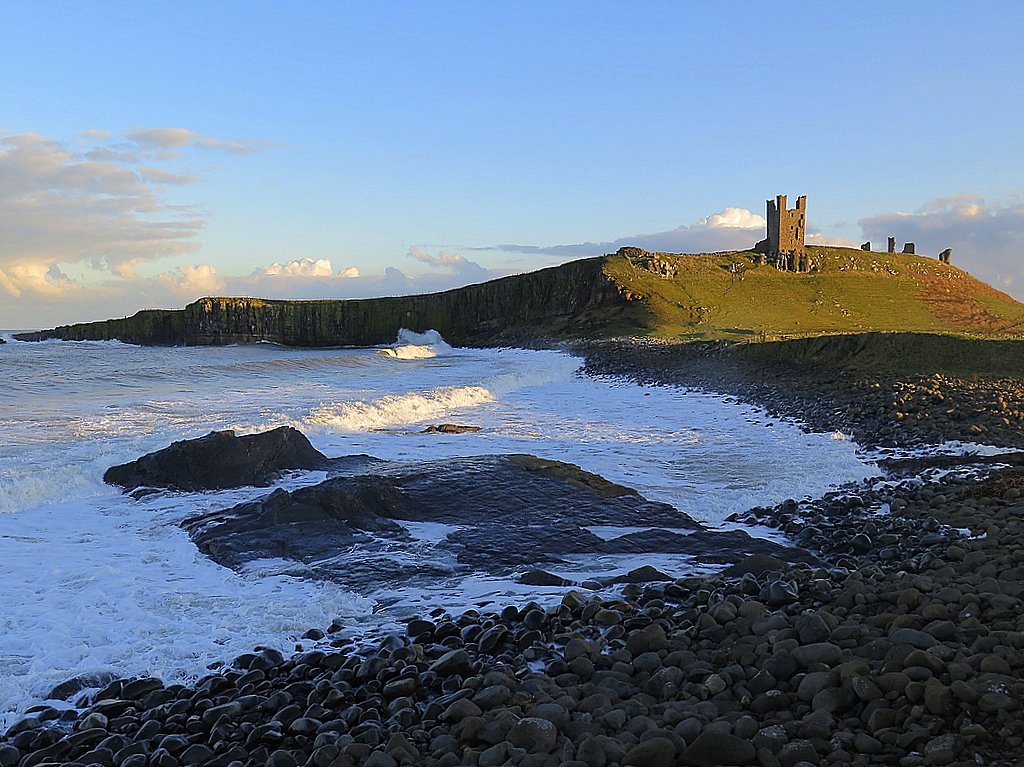
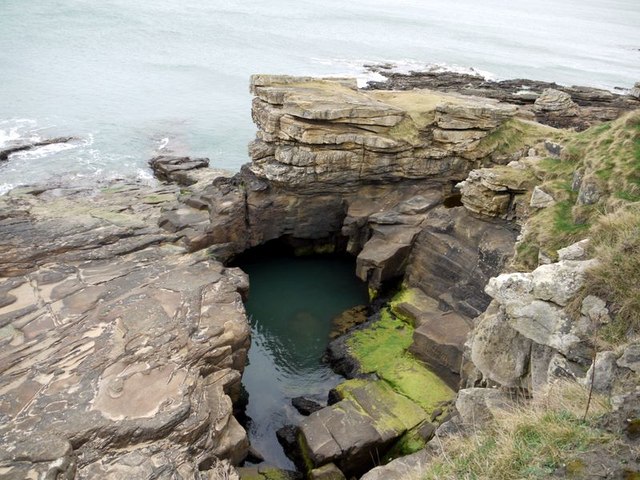
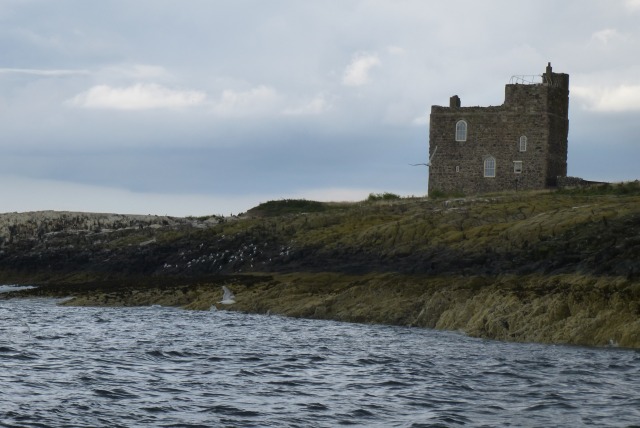
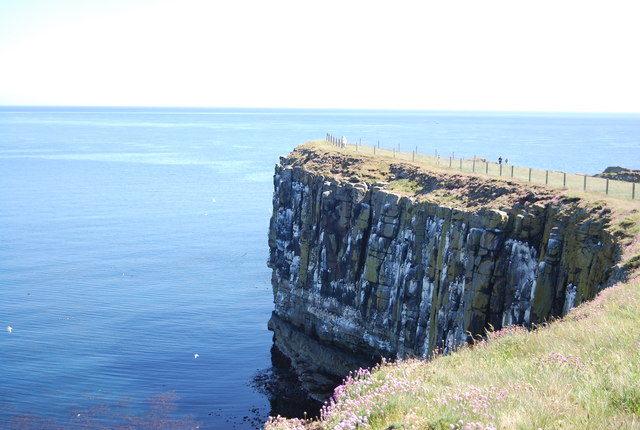
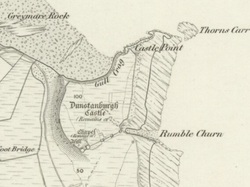
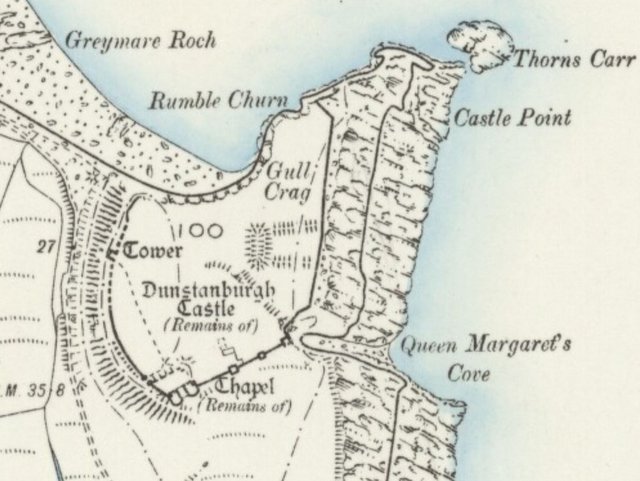
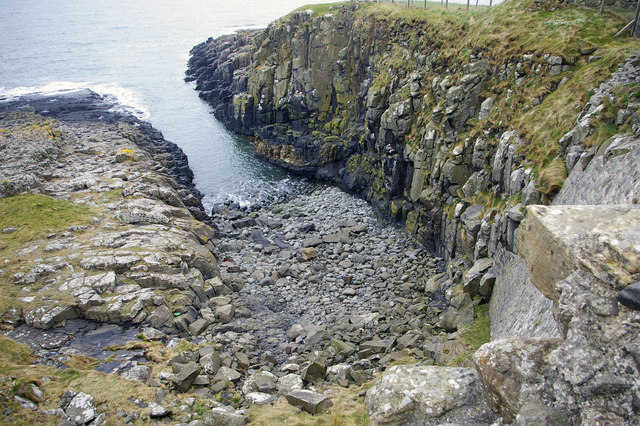
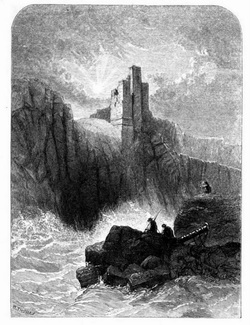
 RSS Feed
RSS Feed
